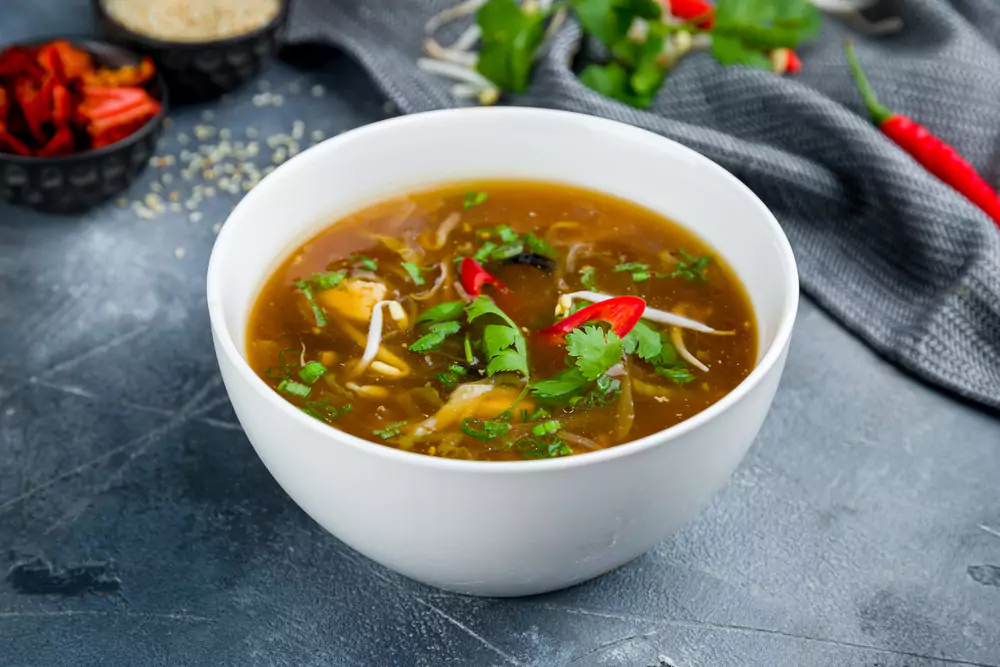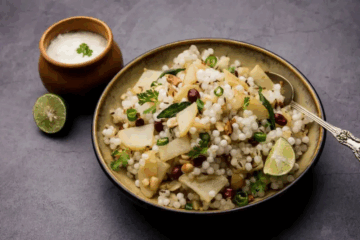What is Hing, and Why Should I Add It to My Soups and Stews?
Summary: Hing, or asafoetida, is a resin from the root of certain plants. It adds a unique, umami flavor to soups and stews, enhancing their taste.
Detailed Answer:
- Hing, also known as asafoetida, is a gum-resin extracted from the roots of Ferula plants.
- It possesses a strong, pungent aroma when raw but transforms into a mellow, umami-rich flavor when cooked.
- Adding hing to soups and stews can enhance their taste by imparting a deep, savory flavor, making them more aromatic and flavorful.
- Its unique taste is often described as a blend of onion, garlic, and leek.
- Traditionally used in Indian cuisine, hing is also popular in Middle Eastern cooking for its distinctive flavor.
- Hing is also used as a digestive aid, often added to dishes to reduce the likelihood of indigestion and bloating.
- It acts as a natural preservative, extending the shelf life of the dishes it is added to.
Are There Any Health Benefits Associated with Using Hing in Cooking?
Summary: Hing has numerous health benefits, including aiding digestion, reducing bloating, and possessing anti-inflammatory properties.
Detailed Answer:
- Digestive Aid: Hing is known to improve digestion by stimulating the production of digestive enzymes.
- Reduces Bloating: It helps in reducing gas and bloating, making it beneficial for those with digestive discomfort.
- Anti-Inflammatory: Hing contains compounds with anti-inflammatory properties, which can help in reducing inflammation.
- Antimicrobial: It has antimicrobial properties that can help in fighting off bacterial and fungal infections.
- Pain Relief: Hing is also used in traditional medicine for its pain-relieving properties, particularly for stomach pain.
- Rich in Antioxidants: Hing is a good source of antioxidants, which help protect the body from free radicals and oxidative stress.
- Respiratory Health: Hing is used in traditional remedies for respiratory issues such as asthma and bronchitis, helping to alleviate symptoms.
- Blood Sugar Control: Some studies suggest that hing can help in regulating blood sugar levels, making it beneficial for diabetics.
- Heart Health: Hing has been linked to improved heart health by helping to lower blood pressure and cholesterol levels.
How Does the Flavor of Hing Complement Different Types of Soups and Stews?
Summary: Hing’s umami-rich flavor complements both vegetable and meat-based soups and stews, adding depth and complexity to the dishes.
Detailed Answer:
- Vegetable Soups: Hing enhances the natural flavors of vegetables, adding a savory depth that complements the fresh ingredients.
- Meat-Based Stews: In meat stews, hing brings out the umami flavors, making the dish more robust and flavorful.
- Legume-Based Soups: Hing pairs well with lentils and beans, enhancing their earthy flavors.
- Spicy Soups: In spicy soups, hing balances the heat with its umami profile, providing a well-rounded flavor.
- Fusion Recipes: Hing can be used in fusion recipes, blending traditional and modern flavors for a unique culinary experience.
- Seafood Stews: Hing’s distinct flavor complements seafood dishes by enhancing the natural taste of fish and shellfish.
- Broth-Based Soups: Even in light broths, hing can add an unexpected depth that transforms a simple soup into a gourmet experience.
- Bean Stews: Hing enhances the flavor of bean-based stews, making them heartier and more satisfying.
Can I Use Hing in Vegetarian and Non-Vegetarian Recipes Alike?
Summary: Yes, hing can be used in both vegetarian and non-vegetarian recipes, enhancing the flavor of various dishes regardless of the main ingredients.
Detailed Answer:
- Vegetarian Recipes: Hing is commonly used in vegetarian dishes like lentil soups, vegetable stews, and legume-based curries.
- Non-Vegetarian Recipes: It also complements non-vegetarian dishes such as chicken stews, beef soups, and seafood curries.
- Flavor Enhancer: In both types of recipes, hing acts as a flavor enhancer, bringing out the best in other ingredients.
- Versatility: Hing’s versatility allows it to blend seamlessly into a variety of culinary traditions, from Indian to Middle Eastern and beyond.
- Traditional Uses: Both vegetarian and non-vegetarian traditional recipes incorporate hing, showcasing its widespread culinary applications.
- Customizable: Hing can be adjusted to taste, making it suitable for a wide range of flavor profiles and dietary preferences.
- Marinades and Rubs: In non-vegetarian cooking, hing can be used in marinades and rubs to enhance the flavor of meats before cooking.
- Vegan Options: Hing can be an excellent addition to vegan recipes, providing a savory depth that mimics the taste of umami-rich ingredients like meat and dairy.
Are There Any Traditional or Popular Recipes that Feature Hing-Infused Soups and Stews?
Summary: Yes, traditional recipes like Indian sambar and rasam often feature hing, as well as unique modern recipes like hing-infused tomato soup.
Detailed Answer:
| Recipe | Description |
|---|---|
| Sambar | A South Indian lentil-based stew made with vegetables and tamarind, flavored with hing for a rich, savory taste. |
| Rasam | A traditional South Indian soup made with tomatoes, tamarind, and spices, with hing adding a distinct depth of flavor. |
| Hing-Infused Tomato Soup | A modern twist on classic tomato soup, with hing providing a unique umami flavor. |
| Hing Lentil Soup | A hearty and nutritious soup made with lentils, vegetables, and hing for added flavor. |
| Hing Chicken Stew | A flavorful chicken stew infused with hing, creating a savory and aromatic dish. |
| Hing Vegetable Stew | A wholesome vegetable stew with the aromatic flavor of hing, perfect for a comforting meal. |
| Hing Fish Stew | A delectable fish stew where hing brings out the natural flavors of the seafood, making it irresistible. |
| Hing Coconut Soup | A creamy coconut soup with a hint of hing, offering a unique blend of flavors and textures. |
Conclusion
Hing-infused soups and stews offer a unique twist to traditional recipes, providing a rich and savory flavor that enhances both vegetarian and non-vegetarian dishes. With numerous health benefits and versatile culinary applications, hing is a valuable addition to any kitchen. From traditional recipes like sambar and rasam to modern creations like hing-infused tomato soup, the possibilities are endless. Explore the delightful world of hing-infused soups and stews to elevate your culinary creations and surprise your taste buds with new and exciting flavors.





